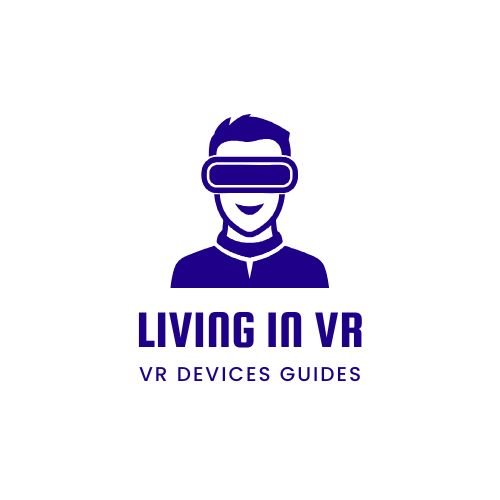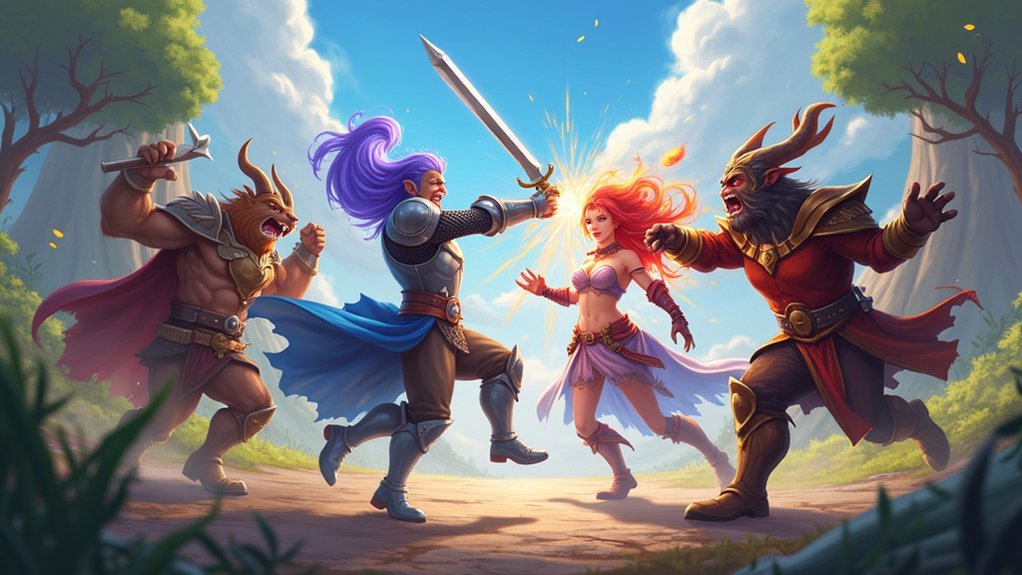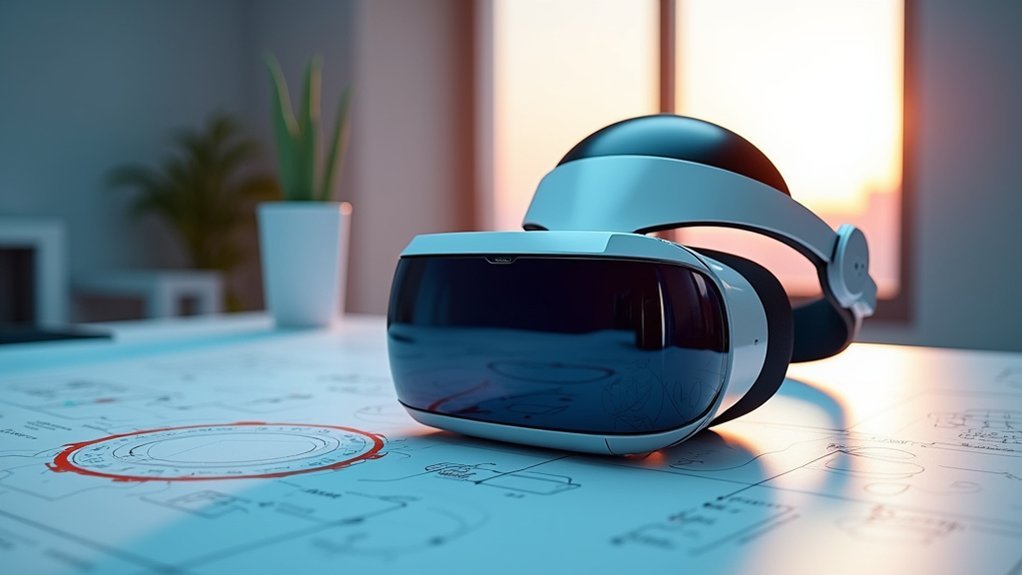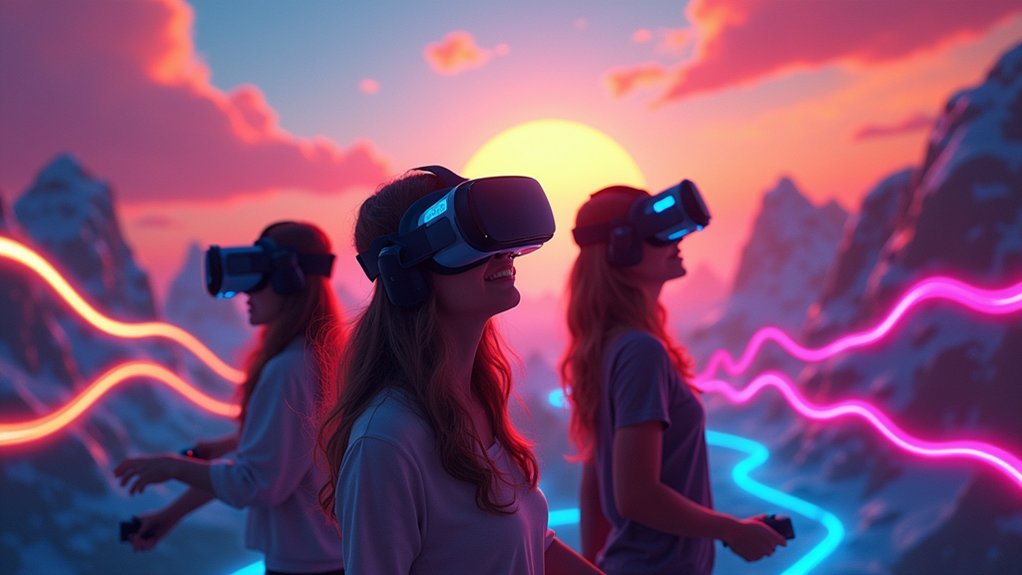You’ll need five key collision systems for multiplayer environments: server-authoritative detection with client prediction for cheat prevention, hybrid physics systems that distribute computational loads between clients and servers, spatial partitioning using quad-trees and octrees for efficient detection, soft collision techniques implementing gentle pushback forces for natural player interactions, and performance optimization strategies like state snapshots and simple collision shapes. These systems balance authority with responsiveness while maintaining game integrity. The complete implementation details will transform your multiplayer experience.
Server-Authoritative Collision Detection With Client Prediction

When developing multiplayer games, you’ll need to balance responsive gameplay with authoritative control by implementing server-side collision validation alongside client prediction systems.
Server-authoritative collision detection guarantees game integrity by validating all collision events, preventing cheating while maintaining consistent game logic across your multiplayer environment. Your clients handle collision handling through prediction techniques, using extrapolation and interpolation to estimate other players’ positions and reduce perceived lag.
Server-side validation prevents cheating while client prediction techniques minimize lag through position extrapolation and interpolation across multiplayer environments.
When clients detect collisions, they’ll send position and velocity data to your server for reconciliation against the authoritative state. This client prediction system provides immediate feedback on player inputs like movement and attacks.
Your server periodically corrects discrepancies, making sure effective communication resolves minor position differences smoothly while maintaining a unified game state for all players.
Hybrid Physics Systems for Large-Scale VR Environments
As your VR environment scales to accommodate hundreds or thousands of simultaneous users, you’ll need hybrid physics systems that strategically distribute computational loads between clients and servers.
These systems use simplified collision geometry and prediction techniques to maintain smooth gameplay while the server handles critical collision detection for authoritative state management.
Your networked physics implementation should leverage:
- Dynamic terrain loading – Stream collision meshes based on player proximity to reduce memory overhead
- 64-bit server architecture – Eliminate floating point precision errors in vast virtual worlds
- Unity’s physics engine optimization – Combine built-in features with custom prediction algorithms for responsiveness
- Authority management protocols – Clearly define which system controls object spawning and collision validation to prevent desynchronization
Effective state synchronization prevents players from falling through terrain or experiencing interaction delays.
Spatial Partitioning and Dynamic Loading for Multi-Region Worlds

Since your VR world expands beyond single-server capacity, you’ll need sophisticated spatial partitioning systems that divide your environment into discrete, manageable regions.
Quad-trees and octrees enhance collision detection efficiency by organizing your game world into accessible sections for rapid processing.
Spatial data structures like quad-trees and octrees partition game worlds into hierarchical sections, dramatically accelerating collision detection through efficient spatial queries.
You’ll implement dynamic loading that activates terrain based on player proximity, reducing memory usage while maintaining smooth frame rates.
Streaming terrain data guarantees seamless shifts between regions, minimizing latency as players cross boundaries.
Server-side collision management maintains authority over all interactions, preventing exploitation of physics discrepancies during region shifts.
You’ll utilize heightmaps for accurate character positioning and bounds checking, guaranteeing proper collision handling and preventing players from falling through unloaded world sections.
Soft Collision Techniques for Seamless Player Interactions
Beyond managing regional boundaries and spatial organization, your multiplayer VR environment requires sophisticated player-to-player collision handling that maintains fluid movement without jarring interruptions.
Soft collision techniques enable multiple players to interact naturally by implementing gentle pushback forces instead of rigid barriers. Your physics engine can calculate dynamic responses that separate overlapping players smoothly while preserving movement momentum.
Key soft collision implementation strategies:
- Dynamic Force Application – Apply gradual separation forces based on overlap distance and player velocities
- Client-Side Prediction – Handle immediate collision responses locally while awaiting server validation
- Velocity-Based Adjustments – Modify pushback strength according to player movement speed and direction
- Authority Synchronization – Maintain server authority over final positions while allowing responsive local interactions
This approach considerably enhances player experience by eliminating movement stuttering and enabling natural navigation in crowded spaces.
Performance Optimization Strategies for Real-Time Physics Synchronization

While soft collision techniques provide smooth player interactions, optimizing the underlying physics synchronization becomes critical when supporting dozens or hundreds of concurrent users in your VR environment. You’ll need strategic approaches to maintain performance without sacrificing collision accuracy.
Implement client-side prediction systems to reduce perceived latency—players see their movements immediately while your server reconciles actions later. Use state snapshots to send only changed data rather than complete object information, drastically reducing bandwidth usage.
| Optimization Strategy | Performance Impact |
|---|---|
| Simple collision shapes (boxes/spheres) | 60-80% CPU reduction |
| Dynamic object loading by proximity | 40-50% processing decrease |
| Interpolation for movement smoothing | 30% visual improvement |
Dynamic loading based on player proximity minimizes active collision processing, while interpolation techniques smooth visual discrepancies from network synchronization delays.
Frequently Asked Questions
Do Multiplayer Games Use TCP?
You’ll find multiplayer games use both TCP and UDP protocols. They typically use TCP for authentication, lobbies, and chat systems, while relying on UDP for real-time gameplay actions requiring low latency.
What Is Deterministic Multiplayer?
You’ll find deterministic multiplayer guarantees all players experience identical game states by synchronizing logic across clients. You’re assured consistent outcomes from same inputs, preventing desynchronization issues that’d otherwise ruin competitive gameplay fairness.
What Is a Multiplayer System?
You’re using a multiplayer system when you play games with others online. It’s networking technology that connects multiple players’ devices, synchronizing everyone’s actions and game states in real-time through servers.
Which Need for Speed Is Multiplayer?
You’ll find multiplayer features in Most Wanted (2012), Rivals (2013), Payback (2017), Heat (2019), and Unbound (2022). Each game offers different online racing experiences where you can compete against other players worldwide.




Leave a Reply